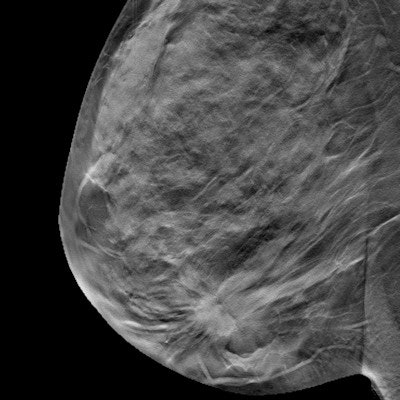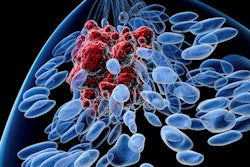
Digital breast tomosynthesis (DBT) is comparable to full-field digital mammography (FFDM) for identifying benign breast lesions, according to a new study published online January 23 in the American Journal of Roentgenology.
And if finding benign lesions are considered undesirable outcomes of mammography screening, the study results suggest that DBT does not contribute to this particular "harm," wrote a team led by Dr. Mayo Fujii of the University of Vermont in Burlington.
"The comparable benign diagnosis detection rates for DBT and FFDM suggest that long-standing evidence on detection rates for specific benign diagnoses for breast cancer screening with FFDM can likely be expected to apply to screening with DBT," the group wrote.
DBT has rapidly entered the clinical mainstream, in part because it appears to improve the harm-to-benefit ratio of breast cancer screening by reducing recall rates and finding more invasive cancers than 2D mammography. But DBT's performance in detecting and diagnosing specific benign and malignant lesions compared with FFDM has been unclear, according to Fujii and colleagues.
To explore the question, the group analyzed data from the Vermont Breast Cancer Surveillance System, which included 86,349 DBT screening examinations and 97,378 FFDM screening studies performed at eight radiology facilities in Vermont. The team compared various performance metrics for FFDM and DBT, as well as detection rates for specific diagnoses between the two modalities.
Compared with FFDM, DBT had a lower recall rate but comparable rates for biopsy, benign biopsy, cancer detection, and benign disease detection, but the results were not statistically significant, the researchers found.
| FFDM vs. DBT for breast screening | ||
| Performance metric | FFDM | DBT |
| Recall rate | 10.9% | 7.9% |
| Biopsy rate | 15.2% | 13.9%* |
| Cancer detection rate | 5.6% | 5%* |
| Benign disease detection rate | 9.5% | 8.9%* |
Among benign diagnoses, DBT and FFDM were comparable across a range of findings; this was also true for malignant diagnoses, but again the results were not statistically significant.
| Benign and malignant diagnoses identified by FFDM and DBT | ||
| Diagnosis | FFDM | DBT |
| Benign | ||
| Nonproliferative lesions | 3.3% | 2.7% |
| Fibroepithelial proliferations | 1.2% | 1.4% |
| Proliferative lesions without atypia | 3.9% | 3.8% |
| Malignant | ||
| Ductal carcinoma in situ | 1.2% | 1.1% |
| Invasive cancer | 4.4% | 4% |
"In this statewide registry-based observational study, breast cancer screening with DBT was associated with reduced recall rate and did not substantially change the distribution of specific benign and malignant diagnoses compared with screening with FFDM alone," Fujii and colleagues wrote.
The study demonstrates that DBT can be used for screening without fear that it will increase screening mammography's harms, the researchers wrote.
"The introduction of DBT improves screening performance by reducing recall rates but has little influence on the benefits or harms of breast cancer screening through an impact on benign diagnoses," they concluded.


















